As we enter the holidays, the best thing we can do is equip ourselves with healthy ways to manage and reduce stress related to the season. That’s why we’re diving into a topic that has been incredibly life-changing for me: adaptogens!
My first real learning experience with adaptogens was when I attended a plant medicine workshop during a Spirit Weavers Gathering in 2016 taught by amazing teacher and friend, Paula Ferraro. I’d known about adaptogens before then, but didn’t truly understand their healing properties and how to incorporate them into my everyday routine. Adaptogens are botanicals and mushrooms that support the body’s natural ability to handle stress. They adapt to each person’s unique needs to help bring their body into balance, working bi-directionally to both help promote relaxation as well as provide more energy and overall stamina. Adaptogens work specifically with the immune, endocrine and neuroendocrine systems. They have been used for centuries in herbal medicine practices throughout the world, most notably in Traditional Chinese Medicine and Ayurveda.
I take a variety of adaptogens everyday. My favorites are ashwagandha, chaga, reishi, rhodiola, lion’s mane, mucuna and tulsi (holy basil). I typically start my day with an adaptogenic blend of mushrooms. If I’m making matcha, I will blend 3-4 adaptogen powders (reishi, chaga, cordyceps, lion’s mane) into my drink (1/2 teaspoon each). If I’m drinking yerba mate, I’ll squeeze about 40 drops of an adaptogenic tincture (Adaptogenic Tonic) into my tea. In the afternoon around 2/3, I usually take another 40 drops of a different adaptogenic tincture (lately Cerebrum Brain Tonic) either just in water or in herbal tea. Finally an hour or so before bed time, I either make a moon milk with powdered adaptogens (ashwagandha, reishi and tulsi) or use a calming adaptogenic tincture (Happiness Tonic) to wind down before sleep. When I’m traveling, I usually bring 2-3 different tinctures with me. I find the tinctures are easier for on-the-go, as they blend into things way more easily.
While I love making potions at home and sharing the knowledge my teachers have taught me in workshops, I wanted to bring in a true master herbalist to share her expert knowledge on the topic. I received so many great questions about adaptogens from you all, and I am so thankful to have Adriana Ayales, medicine maker and founder of Anima Mundi Herbals, provide her insight.
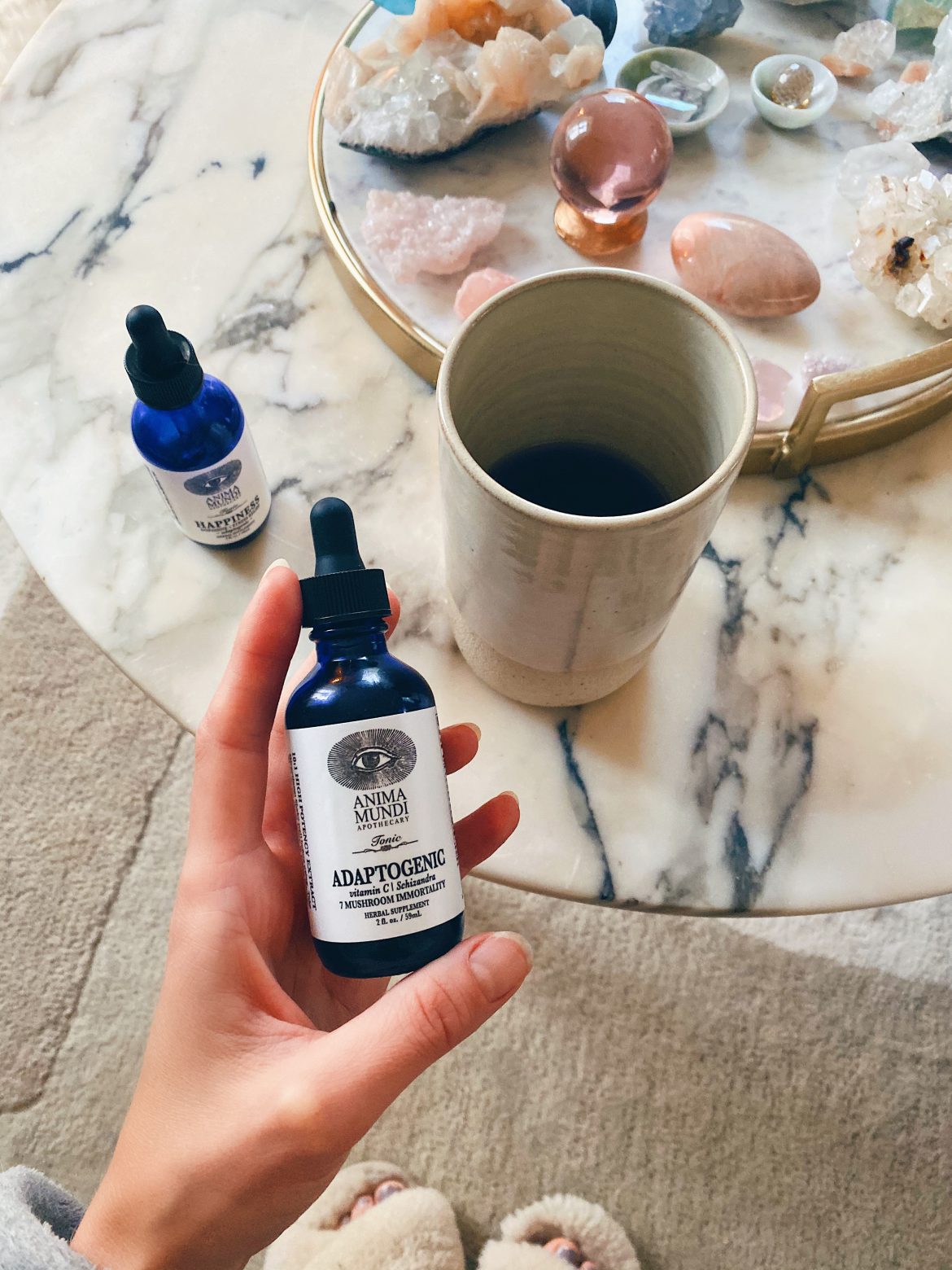
Adriana is a rainforest herbalist who was born and raised in Costa Rica. Immersed in the world of plants since she was a child, Adriana has helped provide relief to people with chronic disease through custom formulas for years. The demand for her formulas naturally grew during her time in New York, and from that Anima Mundi was born. Now back in Costa Rica, Adriana works with sustainable farmers to source indigenous herbs, import organic species from all over the world, and send ingredients to New York for production and distribution. If you ever find yourself in Brooklyn, I highly recommend that you stop by her apothecary shop in Greenpoint!
***NOW THROUGH MONDAY, 12/02/19, ANIMA MUNDI IS OFFERING 20% OFF ALL PRODUCTS WITH CODE WUHAUS.***
Alison’s Favorite Anima Mundi Products:
- Adaptogenic Tonic – great adaptogenic tincture with several kinds of mushrooms, camu camu and mangosteen
- Happiness Tonic – one of my favorite tinctures for stress and mood
- Brain Kit – also makes a great holiday gift!
- Coconut Cream Powder – always travel with this stuff! just add to hot water and you instantly have coconut milk
- Mucuna – the best for mood boosting
- Ashwagandha – so soothing for the nervous system. my favorite all-around adaptogen
- Lion’s Mane – the best brain food!
- Plant-based Collagen Booster – a great plant-based collagen alternative
Alison’s Recommendations for Daily Use:
- Start small by incorporating between 2-3 adaptogens into your daily routine
- If you’re intimidated on where to start, try a preblended formulation that addresses your needs
- Try blending powders into your smoothies or superfood lattes (coffee, tea, or herbal)
- If you don’t have a blender or just prefer to drink regular tea or coffee in the mornings, I recommend using tincture form instead of powders, which can get clumpy if not blended
- Adaptogens work best taken in small amounts over longer periods of time. I recommend taking 1/2 teaspoon of each adaptogen you are working with 2-3 times a day
- Get creative with how you use them! Add them to your homemade soups/broths, granola, bliss balls or cookies/cakes
Alison’s Favorite Adaptogens For:
- Stress + Anxiety: Ashwagandha, tulsi/holy basil, reishi
- Immune Support: All the mushrooms! (chaga, reishi, lion’s mane, maiiake, etc.), astragalus
- Energy: Rhodiola, cordyceps, maca, schizandra
- Mood: Mucuna, ashwagandha
Wu Haus Adaptogenic Recipes:
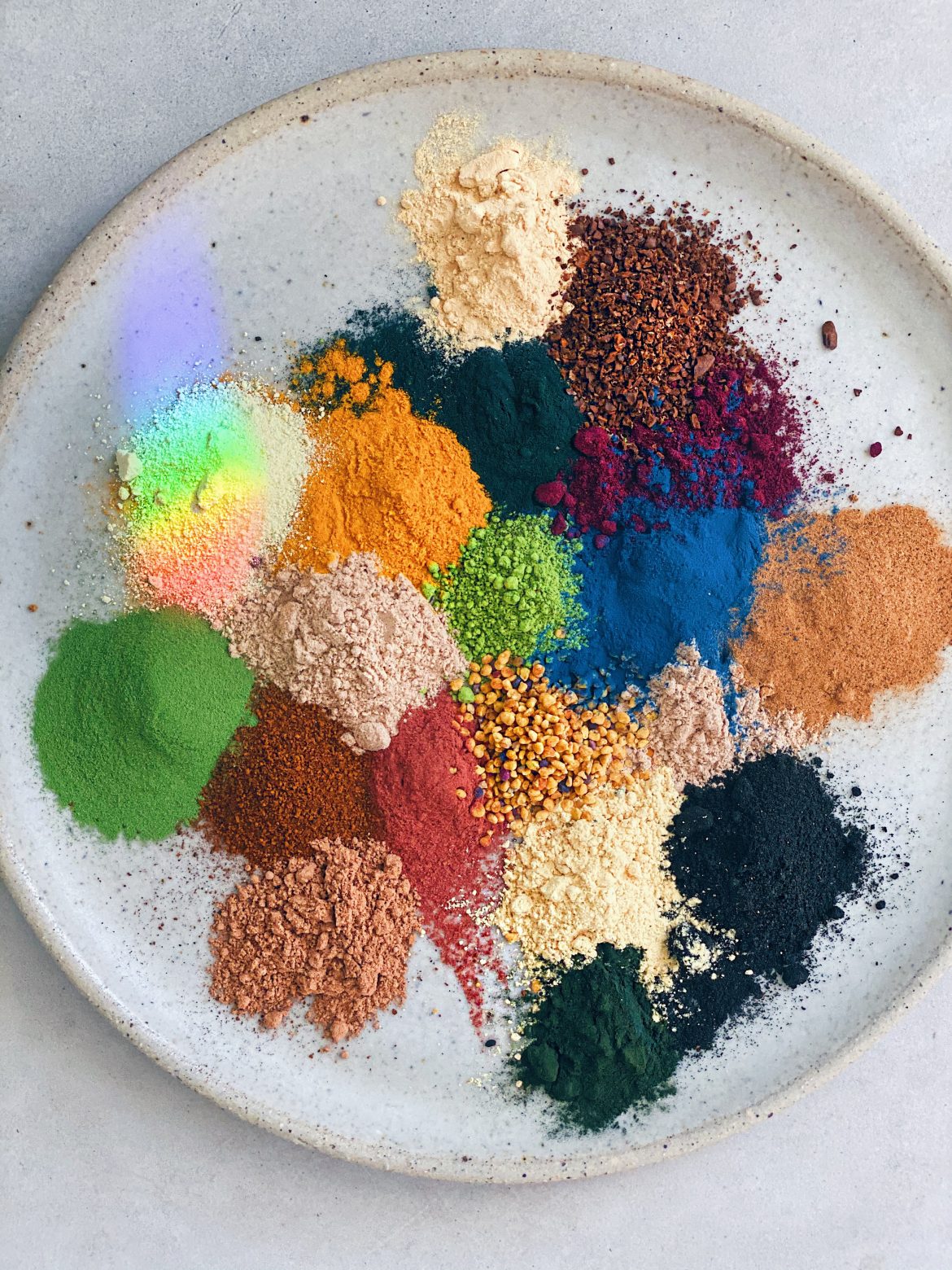
I’ve known and used Anima Mundi’s herbal remedies for several years and was fortunate to connect with Adriana after we were both quoted in a New York Times article about adaptogens last year. Here, she answers your questions about adaptogens, plus offers personal tips for dealing with stress during the holiday season:
Wu Haus: What’s your advice for those who are just getting started with adaptogens?
Adriana Ayales: I would start with up to three different kinds of adaptogens, used as single herbs, so you can notice what the effects are in your life. Also, be patient. Nothing is instantaneous. It’s always good to allow natural medicines to take their time, up to 2 weeks of consistently take it along with a healthy diet, so you can really observe the energetics of that adaptogen. And pair them properly to metabolize. Patience, time and consistency is key. The whole pill-popping culture doesn’t work for these herbs, which work in a more holistic sense.
WH: How much and how often should you take adaptogens?
AA: Every herb is different, and it depends on the reason it’s being used for. For chronic illnesses, for example, larger and consistent doses can be particularly beneficial, but again depends on the imbalance in particular. Adaptogens used for daily maintenance also involves a different dosage. Because these herbs are powerful, a general rule of thumb to keep in mind is to use 1/2-1 teaspoon of its powdered form. When the herb has been extracted, whether as an extract powder or as a liquid extract, the dosing can vary depending on the extraction rate. All in all, consistency is key. The more consistent you are with their use, the more likely you’ll reap their excellent benefits.
WH: What’s the difference between primary and secondary adaptogens?
AA: Many of the adaptogens that are marketed today aren’t officially adaptogens. There are only nine adaptogens that are officially recorded from the 1940s, when they were first studied in the Soviet Union. They’d discovered herbs that helped recovery from stress and biological stress, like being exposed to heavy metals. From there, a lot of people started studying other herbs that have similar properties, like mucuna. There’s no approval in the modern-day sense, but all the chemistry signals that it’s a primary adaptogen. It’s just not labeled as such by the living scientists who created the label in the first place. Hopefully, there will be research in the future.
The nine primary adaptogens are Asian ginseng, American ginseng, ashwagandha, cordyceps, eleuthero, rhaponticum, rhodiola, schisandra and shilajit.
WH: Are there adaptogens that are better to take at a certain time of day?
AA: Yes. I do think some have more of a daytime use than nighttime. And this greatly depends on your body. For example, ashwagandha can be deeply calming to most, but to others it might be energizing. This depends on the current needs of your own constitution. So for some, ashwagandha can be a miraculous nighttime remedy if they’re handling a lot of stress and anxiety. Others, like rhodiola, are more stimulating and awakening, and tend to be best taken during the day.
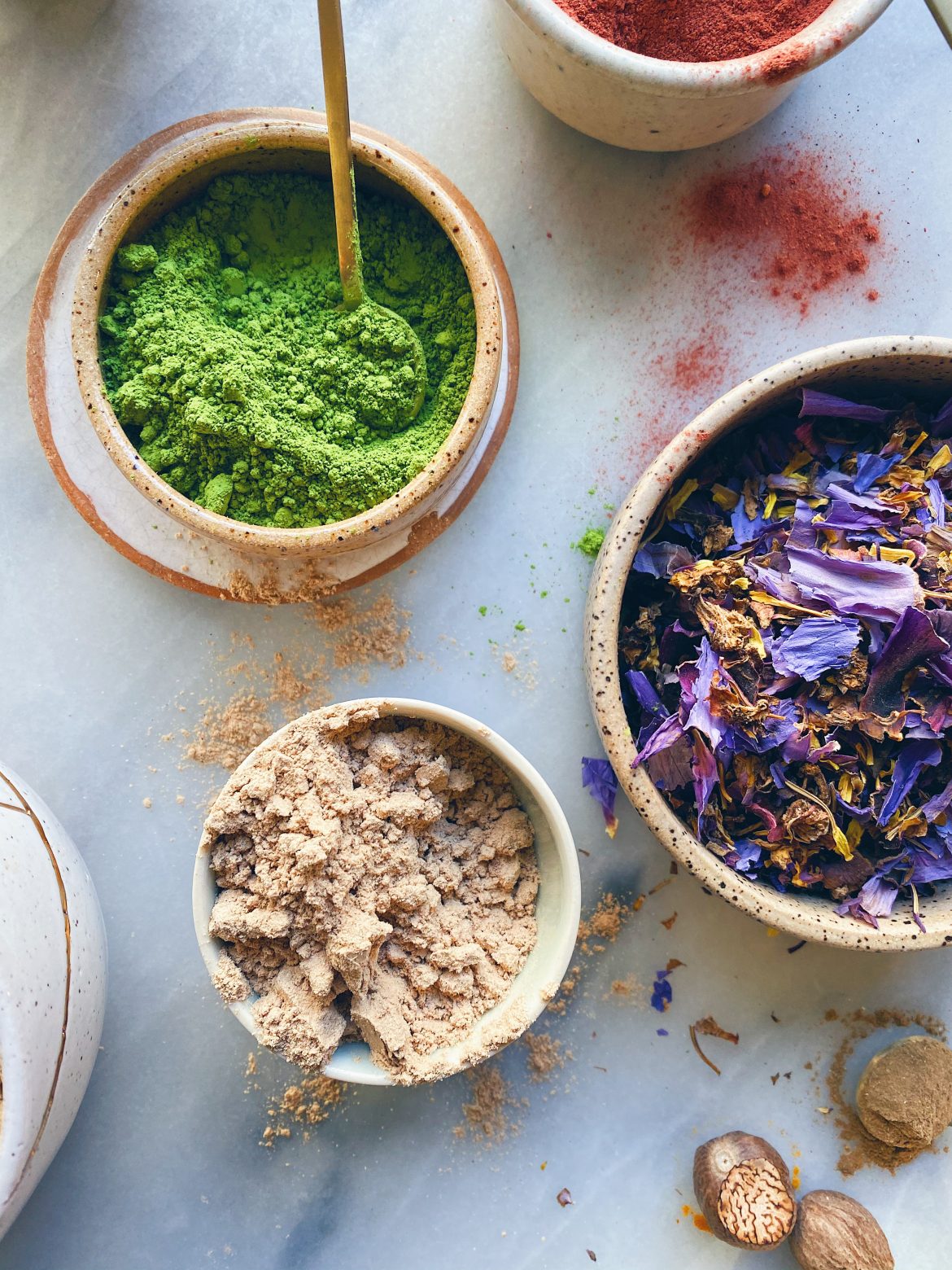
WH: What are the differences in delivery methods?
AA: I think tinctures are a lot more vital than pills. Tinctures tend to capture energetics and vitality over pills, due to the result of its bioavailable nature once the extraction has happened. Pills unfortunately tend to contain binders and fillers, whether to keep them preserved, or because the extract powder in itself wants a clean derivative. Although there are some great ones out there, it’s hard to find clean and fresh sources. But for folks that cannot handle the herbal taste, as a tincture or powder, then finding excellent unadulterated sources for pills can be a great alternative.
WH: What’s your favorite way of taking adaptogens?
AA: Functional foods are so great. You usually combine them with healthy fats – it’s the best way to metabolize them. Raw fresh coconut oil, flaxseed oil, any of that healthy goodness. From power balls to homemade granola bars, the sky’s the limit!
WH: Do certain adaptogens go better together?
AA: Yes. Pairing is key to generate particular results. The art of formulation is creating essential pairings of master herbs with supportive and activating herbs to tackle someone’s particular healing journey properly. There are classic combinations that have been practiced for hundreds of years by Chinese (TCM), Daoist, Ayurvedic and other [medical systems]. For example, there’s a classic formula in Traditional Chinese Medicine that’s Panax ginseng, astragalus and licorice that assists with lethargy and deep-rooted exhaustion. Another famous Ayurvedic pairing that many of us know is Triphala, which is three restorative tonics, such as amla, haritaki and bibhitaki. This is a classic formula for a sluggish digestion. Another classic formula used for depression in clinical herbalism that our Happiness Tonic contains some of the herbs, is rhodiola with supportive “antidepressants” such as St. John’s Wort and Albizia. And so, so many more!
WH: Does your body build immunity against adaptogens?
AA: Technically, primary adaptogens teach the body on a chemical level. So essentially, over time, your body will be able to create the response without its use. One of the key signature traits of primary adaptogens is that they’re safe, which also means they are not habit-forming nor create any kind of dependance.
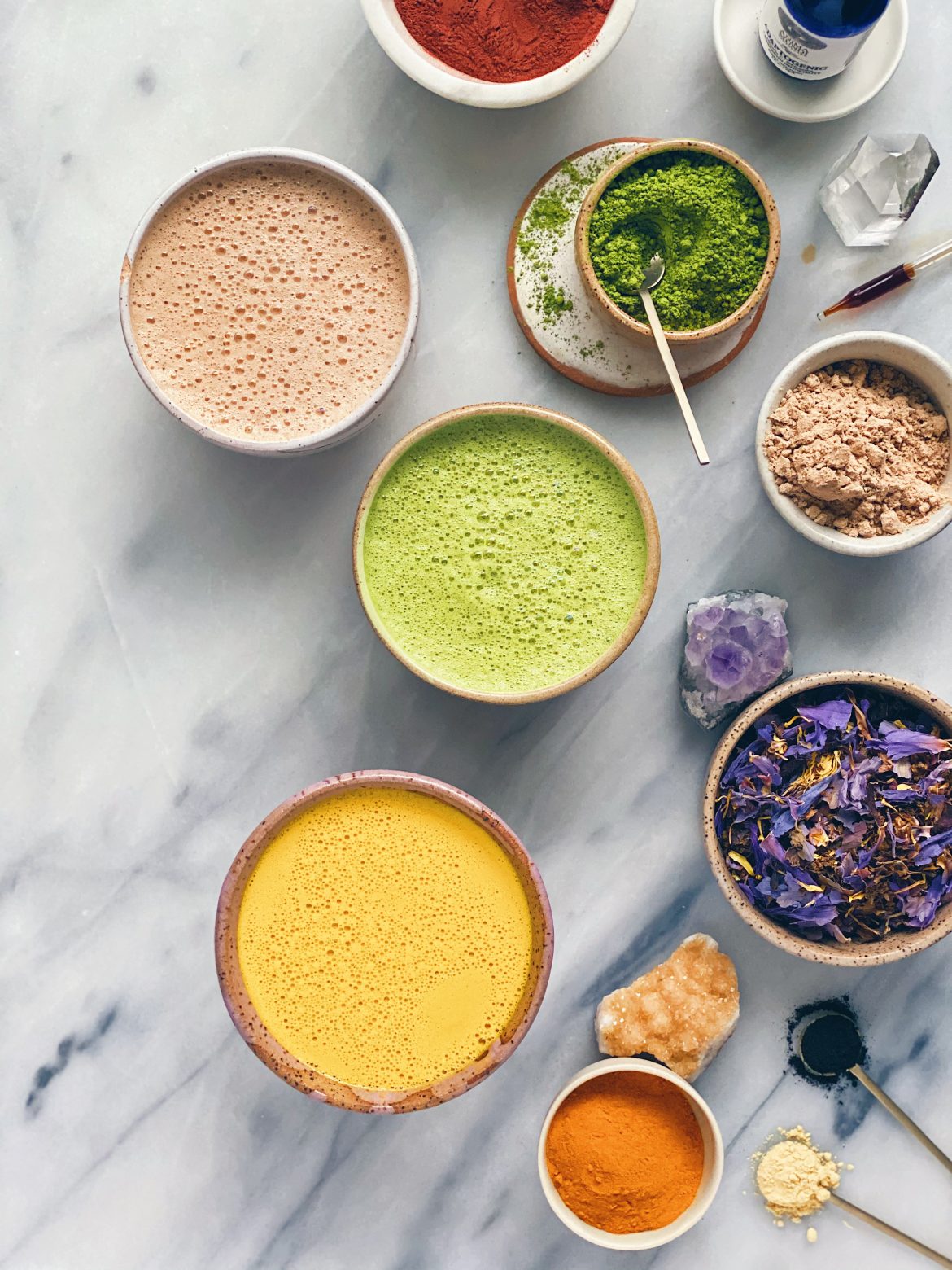
WH: Are there possible side effects or things to consider before taking adaptogens?
AA: Secondary adaptogens that many of us consider primary, like he shou wu, reishi, mucuna, maca, suma, (etc!) might have side effects when taken in very large doses over long periods of time. Primary adaptogens have no foreseen side effects when taken in larger doses, which is why it became a signature trait for the 9 declared adaptogens back in 1957. Yet we’re due for more research to really get to understand the deeper chemical realities of the secondary adaptogens and other herbs that have identical traits to the primary adaptogens.
WH: What adaptogens are helpful for dealing with stress related to the holidays?
AA: Everybody needs to be super energized and as stress-free as possible. My favorites are mucuna, maca and rhodiola to keep you energized and help fight off stress. Cacao, although not technically an adaptogen, is a good accompaniment, especially for digestion. Suma helps keep you super energized. For the wintry season, I enjoy them in warm beverages like teas, soups, or broths. Of course, putting them in a latte or your favorite milky beverage is exquisite.
WH: What’s your favorite way to destress during the holiday season?
AA: Body care with adaptogens! I usually do an adaptogenic body oil. I love integrating ashwagandha, calendula, horsetail, passionflower, and basically any flower that’s currently in season that’s excellent for skin and relaxation. I slowly cook the herbs in the oil on very low heat and use it to massage the shoulders, temples and feet after a warm bath. I also love integrating powdered adaptogens with other plant-based things, like avocado and coconut milk, in face masks. Wintry self-care, inward meditation type of rituals are my favorite.
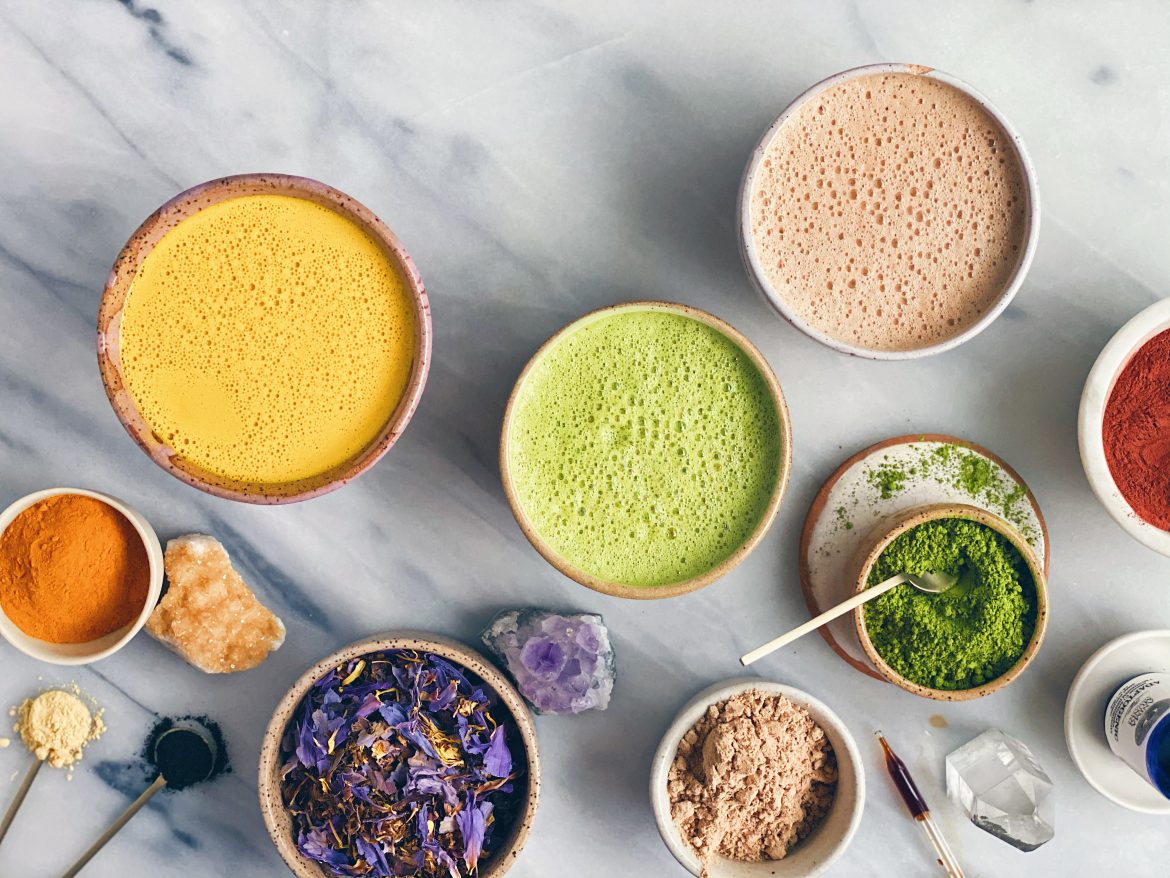

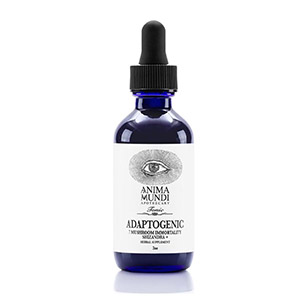


1 comment
[…] into balance, especially during stressful times like these. You can get my full guide to adaptogens here. Anima Mundi sources indigenous herbs from the rainforests of Costa Rica, creating quality […]